Proper Applications for Specialty Lubricants
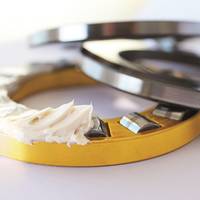
Specialty lubricants are used in a variety of applications, but what factors should you consider? Depending on the situation, specialty lubricants can complement an existing program, in order to obtain maximum efficiencies. Often, shipboard use of lubricants is influenced by two general objectives – rationalization of the lubricant inventory and cost management. Vessels have limited storage space and complex logistics supply systems. This creates a strong incentive to source lubricants that can be applied to several applications.
Finding the Ideal Biodegradable Marine Lubricant
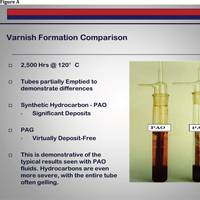
In December 2013, the EPA through its Vessel General Permit (VGP) will introduce the mandatory use of “Environmentally Acceptable Lubricants” or EALs. These products include the lubricating oils that are directly used in applications referred to as “oil to sea interfaces” where the only thing holding the oil from entering the water is a simple seal or gasket. Understanding what this all means to you is important. Bio-degradability rating of 60% or more in 28 days (the minimum criteria to also be classified as “readily biodegradable”).
Are PAGS the Answer?

Ron van Wachem, President of Coast Lubricants and Nanaimo Shipyard Group, reasons that PAGS are the best solution to meet the new VGP requirements. In December 2013, the EPA through its Vessel General Permit (VGP) will introduce the mandatory use of “Environmentally Acceptable Lubricants,” or EALs. These products include the lubricating oils that are directly used in applications referred to as “oil to sea interfaces” where the only thing holding the oil from entering the water is a simple seal or gasket. Understanding what this all means to you is important. The U.S.
Latest NATO Piracy Update
NATO Shipping Centre identifies a new area of piracy concern within the Gulf of Oman. All 22 hostages from the MV Iceberg 1 have now been released from pirate captivity. They had been held since the Iceberg 1 was pirated on 29 March 2010, a period of two years and nine months. The former hostages are now recovering from their ordeal and are receiving food and medical care. On 21 Dec 2012 at 0845Z, a vessel transiting in the Gulf of Oman (2322N; 05926E) was approached and chased by two skiffs for approximately 1.5 hours. Vessel was subsequently confirmed as safe. On 20 Dec 2012 at 1015Z, a vessel transiting in the Gulf of Oman was approached by a skiff reported in position 2449N; 05750E, with possibly armed personnel onboard. The skiff fell back and the vessel was reported safe.
Pirate Alley
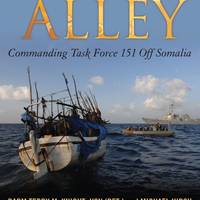
Even with a multi-national flotilla of warships, armed security guards on merchant ships, and phalanxes of lawyers making policy and negotiating ransoms, seemingly unsophisticated Somalis and their small, simple skiffs still attack ships on the high seas and hold seafarers, ships and cargos for ever-growing sums of money. Rear Adm. Terry McKnight, a retired naval officer, had a front row seat in the effort to deter and defend against piracy on the high seas. McKnight, who with Michael Hirsh wrote Pirate Alley – Commanding Task Force 151 Off Somalia…
Proposed 2013 VGP Links Enviro Stewardship to Long-Term Growth

The EPA’s Proposed 2013 Vessel General Permit (VGP) will require vessel owners and operators to adopt environmentally-acceptable lubricants (EALs) into their operations to further reduce their environmental impact starting in December 2013. This regulation brings a two-fold benefit to the industry by boosting the bottom line of both small and large vessel operations, while engendering positive change that ensures the preservation of ecosystems in which these vessels operate. The…
Latest NATO Report Indicates Pirates Still Weatherbound
During the reporting period of 26 September to 02 October 2012 there were no piracy related incidents in the High Risk Area (HRA). In the period the NATO Shipping Centre received one report of suspicious activity in the Southern Red Sea (SRS) Bab-al-Mandeb (BAM) and Gulf of Aden (GOA). Masters are still reminded to remain vigilant while transiting this area. The Southwest Monsoon season is currently in transition. Improving weather conditions will likely allow pirates to operate further out from shore. Note that pirate activity can still take place during the monsoon season: during this time pirates are likely to operate closer to shore to avoid severe conditions further out at sea.
NATO Piracy Retrospect of Past Week
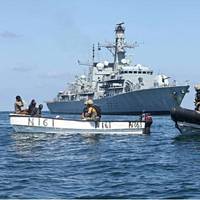
On 29 June 2012 a dhow Pirate Attack Group (PAG) was disrupted at position 14 02N 051 25E approximately 145nm North West of Socotra Island. This is the same dhow which attacked a merchant vessel on 27 Jun at position 14 23N 054 38E. Pictures supplied from the merchant vessel during this recent attack led to the rapid release of this pirated dhow. Activity over the past two weeks shows that pirate activity can still take place during the South-West Monsoon and that pirates are operating closer to shore to avoid severe conditions further out to sea.
Weekly Piracy Update from NATO
The increase of attacks within the past week is evidence that pirate activity can still take place during the South-West Monsoon and Masters should remain vigilant to this threat. On 18 Jun 2012 a merchant vessel was attacked by 3 skiffs at position 14 28 N 050 45 E. Each skiff had 5-6 persons on board. Small arms and Rocket Propelled Grenades (RPGs) were used against the merchant vessel. Early morning 20 Jun 2012 a merchant vessel was attacked by 1 skiff with 5-6 persons aboard at position 20 50N 059 30E. The skiff fired upon the vessel with small arms at a distance of 1nm. Rocket Propelled Grenades (RPGs) were also seen aboard the skiff. Due to the South-West monsoon between June and September, sea conditions in the HRA are expected to be generally unfavourable for small boats.
Piracy – Nato Update on Number of Recent Attacks
As it is now the monsoon transition period and the sea states become more favourable for small boats, it is expected that pirate activity will continue to increase. A dhow was hijacked approximately 10 nm northeast of Raas Caseyr light, Somalia, in vicinity of position 12 00N 051 22E. It is believed to be white in colour, and its current location remains unknown. There has been an increase of piracy related activity in the Arabian Sea, as the weather has been favourable for small boats. A merchant vessel was attacked by one skiff approximately 300nm southeast of the Omani coast, in position 16 58N 064 48E and another merchant vessel was attacked by two skiffs approximately 140nm northeast of Socotra Island.
NATO's Weekly Piracy Assessment
Reporting period: 19 to 25 January 2012 (Updated: 25 January 2012). The reporting period of 19 to 25 January 2012, has been very quiet. There was one disruption, two approaches, and two reports of suspicious activity. Two individuals kidnapped by Somali pirates on 25 October 2011 were rescued on 25 January 2012. Masters are advised to be vigilant as PAGs are active and waiting for the opportunity to attack merchant ships. Masters are asked to report any suspicious activity to UKMTO and NSC. Masters are reminded that the threat of piracy is always present in the High Risk Area (HRA) and are advised to completely implement self-protection measures as recommended in Best Management Practices (BMP4).
NATO's Weekly Piracy Assessment
Overview of week of 22-28 December 2011. During the reporting period of 22-28 December 2011 pirate activity against vessels was low. One vessel was hijacked on 27 December approximately 50NM off the coast of Oman in the vicinity of 1818N 05736E. Details can be found in Alert 250. Masters are reminded that the threat of piracy is always present in the High Risk Area (HRA) and are advised to implement self-protection measures as recommended in Best Management Practices (BMP4). Prudent and timely application of BMP can make the important difference of being approached, attacked, or being pirated. On 22 December a suspicious approach by two skiffs was reported in the Central Arabian Sea in the vicinity of 1122N 06333E.
NATO Weekly Piracy Assessment
Reporting period: 29 September - 05 October 2011 (Updated: 06 October). During the reporting period (29 Sep – 5 Oct 11) there were two incidents of suspicious activity and one attack in the Gulf of Aden (GOA), one incident of suspicious activity, one disruption and two attacks in the Arabian Sea and one approach, three attacks and a disruption in the central Somali Basin. Also, a French woman was abducted from Manda Island off the Kenyan coast. Weather conditions improve across the entire area, and pirate activity is expected to rise in a similar pattern to last year. Pirate related activity ashore continues to increase in preparation of Pirate Attack Groups (PAGs), some of which are believed to be already at sea, continue.
Spanish Warship Disrupts Suspected Pirates
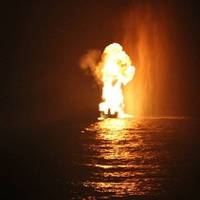
On 28 March 2011, the EU NAVFOR Spanish warship SPS Canarias disrupted a suspected Pirate Action Group (PAG), consisting of a whaler-style boat and a skiff, 260 Nautical Miles North-West of the Seychelles after a fishing vessel reported the PAGs presence to the warship. Early morning on 28 March, the Seychellois flagged fishing vessel reported that a whaler and a skiff had approached her in a suspicious manner with automatic weapons and a Rocket Propelled Grenade(RPG) clearly visible.
EU NAVFOR Transfers Suspected Pirates
This morning, 17 March, saw the culmination of highly successful EU NAVFOR pirate disruption activities by the EU NAVFOR French warship Nivose against Pirate Action Groups (PAG) operating in the Somali basin, approximately 350 nautical miles off the Somali Coast. The PAG activities on 4 March led to an immediate response by EU NAVFOR warships and Maritime Patrol Aircraft and the EU NAVFOR Flag ship ETNA despatched Nivose to seek out the PAGs operating in the area. On 5 March, Nivose intercepted a PAG and boarded two skiffs and a mother ship. The mother ship (whaler) was destroyed and she took on board two skiffs and detained 11 suspected pirates in an area clearly linked to the unsuccessful attack on the Spanish FV Intertuna 2.





